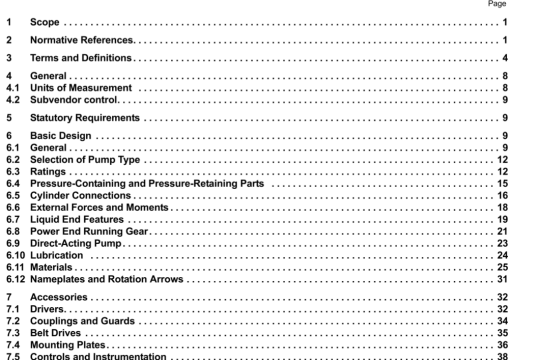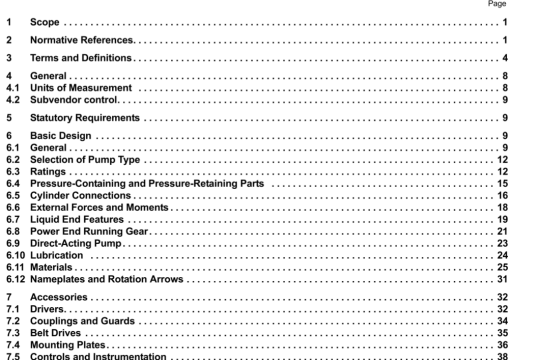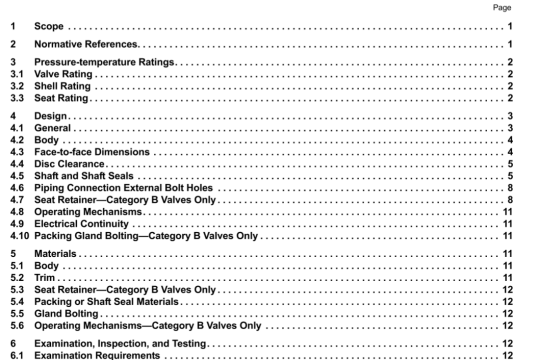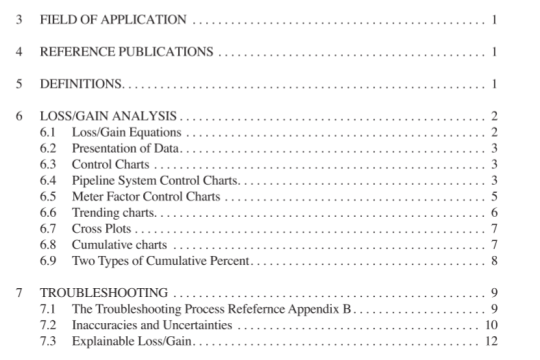API RP 14E:2007 pdf download
API RP 14E:2007 pdf download.Recommended Practice for Design and Installation of Offshore Production Platform Piping Systems.
2.1 Pipe Grades.
a. Non-Corrosive Hydrocarbon Service. The two most commonly used types of pipe are ASTM A106, Grade B, and API 5L, Grade B. Seamless pipe is generally preferred due to its consistent quality. ASTM A1O6 is only manufactured in seamless while API 5L Is available in seamless, electric resistance welded (ERW) and submerged arc welded (SAW). When use of Grade B requires excessive wall thickness, higher strength pipe such as API 5L. Grade X52, may be required; however, special welding procedures and close supervision are necessary when using API 5L, Grade X46, or higher.
Many of the grades of pipe listed in ANSI B31.8 are suitable for non-corrosive hydrocarbon service. The following types or grades of pipe are specifically excluded from hydrocarbon service by ANSI B31.3:
(1) All grades of ASTM A120.
(2) Furnace lap weld and furnace buttweld.
(3) Fusion weld per ASTM A134 and A139.
(4) Spiral weld, except API 5L spiral weld.
b. Corrosive Hydrocarbon Service. Desip for corrosive hydrocarbon service should provide for one or more of the following corrosion mitipting practices: (1) chemical treatment,: (2) corrosion resistant alloys; (3) protective coatings (See Paragraph 6.5.b). Of these, chemical treatment of the fluid in contact with carbon steels is by far the most common practice and is generally recommended. Corrosion resistant alloys which have proven successful in similar applications (or by suitable laboratory tests) ma be used. If such alloys are used, careful consideration should be given to welding procedures. Consideration should al be given to the possibility of sulfide and.chlo ride stress cracking (See Paragraphs 1.7.c and l.7.d). Adequate provisions should be made for corrosion monitoring (coupons, probes, spools, etc.) and chemical treating.
c. Sulfide Stress Cracking Service. The following gwdelines should be used when selecting pipe if sulfide stress corrosion cracking is anticipated:
(I) Only seamless pipe should be used unless quality control applicable to this service has been exercised in manufacturing ERW or SAW pipe.
(2) Cold expanded pipe should not be used unless followed by normalizing, quenching and tempering, tempering, or heat treatment as described in 2.l.c(4).
(3) Carbon and alloy steels and other material.. which meet the property, hardness heat treatment and other requirements of 4ACE MR-O1-75 are acceptable for use In sulfide stress cracking service.
(4) Materials not meeting the metallurgical requirements of NACE MR-Ol-75 may be used; however, usage should be limited to applications or systems in which the external environment and the process stream can be continuously maintained to assure freedom from sulfide stress cracking, or limited to those materials for which adequate data exists to demonstrate resistance to sulfide or chloride stress cracking in the application or system environments to which the nLaterials are exposed, (See MR-O1.75).
The most commonly used pipe grades which will meet the above guidelines are: ASTM A106, Grade B; ASTM A333, Grade 1; and API 5L, Grade B, seamless. API 5L X grades are also acceptable; however, welding presents special problems. To enhance toughness and reduce brittle fracture tendencies, API 5L pipe should be normalized for service temperatures below 30° F. ASTM A333, Grade 1, is a cold service piping material and should have adequate notch toughness in the temperature range covered by this RP (-20° to 650°F).
d. Utilities Service. Materials other than carbon steel are commonly used in utilities service. If, however, steel pipe is used that is of a type or grade not acceptable for hydrocarbon service in accordance with Paragraph 2.1.a, some definite marking system should be established to prevent such pipe from accidentally being used in hydrocarbon service. One way to accomplish this would be to have all such pipe galvanized.
e. Tubing. AISI 316 or AISI 316L stainless steel, seam 1e88 or electric resistance welded tubing is preferred for all hydrocarbon service, and air service exposed to sunlight. Tubing used for air service not exposed to sunlight, or instrument tubing used for gas service contained in an enclosure, may be made of other materials. If used, synthetic tubing should be selected to withstand degradation caused by the contained fluids and the temperature to which it may be subjected.
22 Sizing Criteria — General. In determining the diameter of pipe to be used in platform piping systems, both the flow velocity and pressure drop should be considered. Sections 2.3, 2.4 and 2.5 present equations for calculating pipe diameters (and graphs for rapid approximation of pipe diameters) for liquid lines, single-phase gas lines, and gas/liquid two-phase lines, respectively. Many companies also use computer programs to facilitate piping design.




